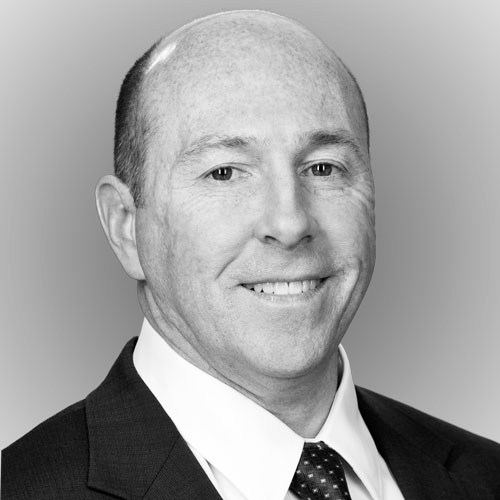As an adult, Williams moved fourteen times for his career as a human resources officer for large multinational companies including General Motors, Monsanto, Honeywell, and Danaher and Cooper Industries (now Eaton Corporation). Everywhere he lived, Williams always owned snowmobiles among other power sports vehicles, even in warmer states like Florida, Arizona, and Texas.

Then, almost six years ago, he got a call from a long-term business friend, asking if he would consider coming to work for a smaller company.
The company was Polaris Industries, a Minnesota-based manufacturer of snowmobiles, off-road vehicles, motorcycles, and other power sports vehicles and products. Williams couldn’t turn it down. “It was an exceptional opportunity,” he says. “It’s a dream job. There is literally nothing on the face of the earth that I would rather do than this. How many people can say that?”
When Williams joined the company as chief human resources officer, Polaris was doing under $2 billion in sales and had about 3,000 employees and three US plants. In the last five years, he has worked with CEO Scott Wine to pursue an aggressive growth strategy, hiring more than 5,000 new employees, overseeing sixteen acquisitions, establishing critical international beachheads, and helping the company expand to fourteen manufacturing plants worldwide. Polaris now does about $5 billion in sales and is planning to double that number again in the coming years.
Polaris is a manufacturing company with an innovation culture similar to technology companies in Silicon Valley, according to Williams. “Polaris is a fast-moving, hard-charging, and results-oriented yet collaborative meritocracy,” he says. “It’s exciting. It’s a work hard, play hard environment that is fiercely competitive but not in a dysfunctional way. The only way I win is if my colleague wins.”
Williams often wears his motorcycle boots and jeans to the office, and he doesn’t mind if his employees operate from home or work strange hours. “We care about results,” he says.
Williams is responsible for the full human capital agenda, including talent acquisition, development and deployment, organization development, and motivation and reward strategy, but his job entails much more.
Succeeding in human resources is not just about being a part of the company’s strategy, Williams says, but about helping lead it. “You have to be in there with your internal customers looking at the business as they do,” he says. “If we are looking at an acquisition, for me to add value I need to understand the financial implications and synergies so I can have a strong point of view on whether or not we should do the deal.”
He also looks for who will be leading the company in the future. “One of my pressing agenda items each year is identifying and developing future leaders,” Williams says. “Everything starts with having the right leaders at the top. If you get rockstar leaders, they know what rockstar talent looks like, and they build their teams accordingly. A-players beget A-players.”
Polaris puts new hires through a rigorous assessment process, which Williams says leads to low turnover. “It works. We’re right a lot more than we’re wrong because we know what we’re looking for in advance,” he says.
“Everything starts with having the right leaders at the top. If you get rockstar leaders, they know what rockstar talent looks like, and they build their teams accordingly. A-players beget A-players.”
Even with $5 billion in annual revenue and more than 8,000 employees, Polaris is still the smallest company Williams has worked for in his thirty-one-year career, but he doesn’t see that as a bad thing. “Smaller companies are more agile,” he says. “We move faster, we’re not bureaucratic, our product development cycles are fast, and our decision-making process has to be fast.”
When Williams started with the company five years ago, it had a modest sales presence in Western Europe, but today it has business teams on nearly every continent and manufacturing capability in Europe, Mexico, China, and India. “Our global footprint has expanded significantly,” he says.
The next phase of evolution is the development, sourcing, and manufacturing of new products for local application in all opportunistic emerging economies globally. This includes operating in markets adjacent to traditional power sports, he says.
Hiring talent in different parts of the world that shares the company’s DNA can be tricky, accordingly to Williams. “You need to find people who mirror your culture, but still represent their local attributes as well. It’s a ‘think global, act local’ orientation,” he says.
Williams also has to keep the company focused on successful change management because of its fast pace and aggressive growth strategy. “Everything represents a change: the new products, the new parts of the world we’re in, the people we’re hiring,” he says.
That’s why his organizational development team has come up with an organized change-management framework and portfolio of tools to guide leaders from point A to point B. He calls his human resources leaders “change agents” to facilitate the company through times of transition with project plans and timelines.
“We have literally architected the steps including who, what, when, where, how, and risk-mitigation plans for what could go wrong,” Williams explains. “It’s about having holistic tools and guidelines rather than just winging it.”
With so much change happening across the organization, it increases the probability that something could go wrong, according to Williams. Which is why he says it is so important to get the right people in every job.
“I look for critical thinking, analytical people who are capability builders and problem solvers,” Williams says. “My style is to set the direction and expectations, and then intervene and coach people from there.”
While human resources is listed in his title, Williams would describe himself as a businessperson first and advises other human resources professionals to think outside of their function for success. He adds that it’s important to understand who the customer group is and then develop the agenda to support and add value to them. He cites the need for human resources teams to develop a well-rounded mind-set that includes critical thinking, diagnostic, and assessment skills.
“You are almost an engineer for human capital. Leverage your strengths and step outside of your comfort zone and embrace the things you are least good at and figure out how to get better,” Williams says. “Be aggressive with the opportunities you have in your career. If you’re not making mistakes and learning from them, you’re playing it too safe. The world is changing fast. Winners will be marked by disruptive and bold leadership. This is our time, time for human resources to really matter.”















